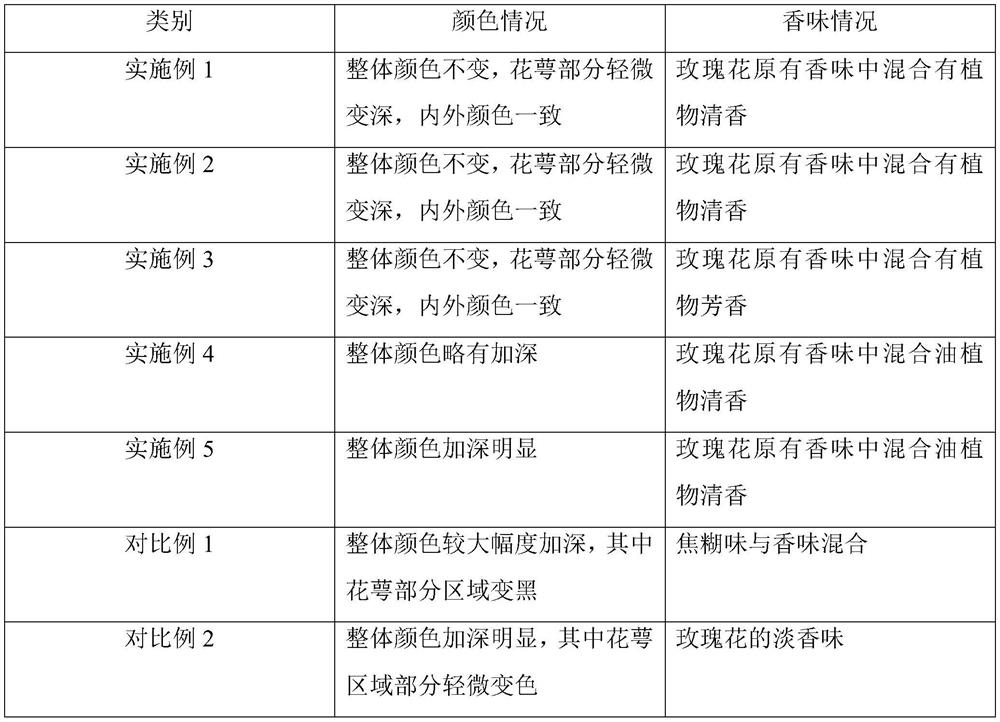Process for vacuum freeze drying of roses
A vacuum freeze-drying, rose technology, applied in the direction of drying solid materials, drying solid materials without heating, promoting the preliminary treatment of solid materials drying, etc. Flowers are completely dry and other problems, to achieve the effect of color stability
- Summary
- Abstract
- Description
- Claims
- Application Information
AI Technical Summary
Problems solved by technology
Method used
Image
Examples
Embodiment 1
[0026] A vacuum freeze-drying process for roses, comprising the following steps:
[0027] S1 selects fresh roses, and requires the picking period to be no more than 24 hours, and washes the picked roses in clean water to obtain clean roses;
[0028] S2 put the cleaned roses in the atomized color-preserving solution for 35min, then place them in a vacuum chamber, and control the air pressure in the vacuum chamber to be 10kPa; the weight components of the color-preserving solution include 43 parts of ultrapure water , 17 parts of tartaric acid, 7 parts of jojoba oil and 7 parts of almond oil; using jojoba oil as a dispersant, carrying tartaric acid and almond oil into the petal cells of roses, while jojoba oil and almonds The combination of the good antioxidant properties of the oil and the antioxidant properties of tartaric acid can lower the solidification temperature of roses to a certain extent, so that roses can maintain the stability of the cells in the petals of the flowe...
Embodiment 2
[0033] The weight components of the color-preserving solution were changed to 40 parts of ultrapure water, 10 parts of tartaric acid, 5 parts of jojoba oil and 5 parts of almond oil, and all the other formulas and steps were the same as in Example 1.
Embodiment 3
[0035] The weight components of the color-preserving solution were changed to 50 parts of ultrapure water, 20 parts of tartaric acid, 10 parts of jojoba oil and 10 parts of almond oil, and all the other formulas and steps were the same as in Example 1.
PUM
 Login to View More
Login to View More Abstract
Description
Claims
Application Information
 Login to View More
Login to View More - R&D
- Intellectual Property
- Life Sciences
- Materials
- Tech Scout
- Unparalleled Data Quality
- Higher Quality Content
- 60% Fewer Hallucinations
Browse by: Latest US Patents, China's latest patents, Technical Efficacy Thesaurus, Application Domain, Technology Topic, Popular Technical Reports.
© 2025 PatSnap. All rights reserved.Legal|Privacy policy|Modern Slavery Act Transparency Statement|Sitemap|About US| Contact US: help@patsnap.com


